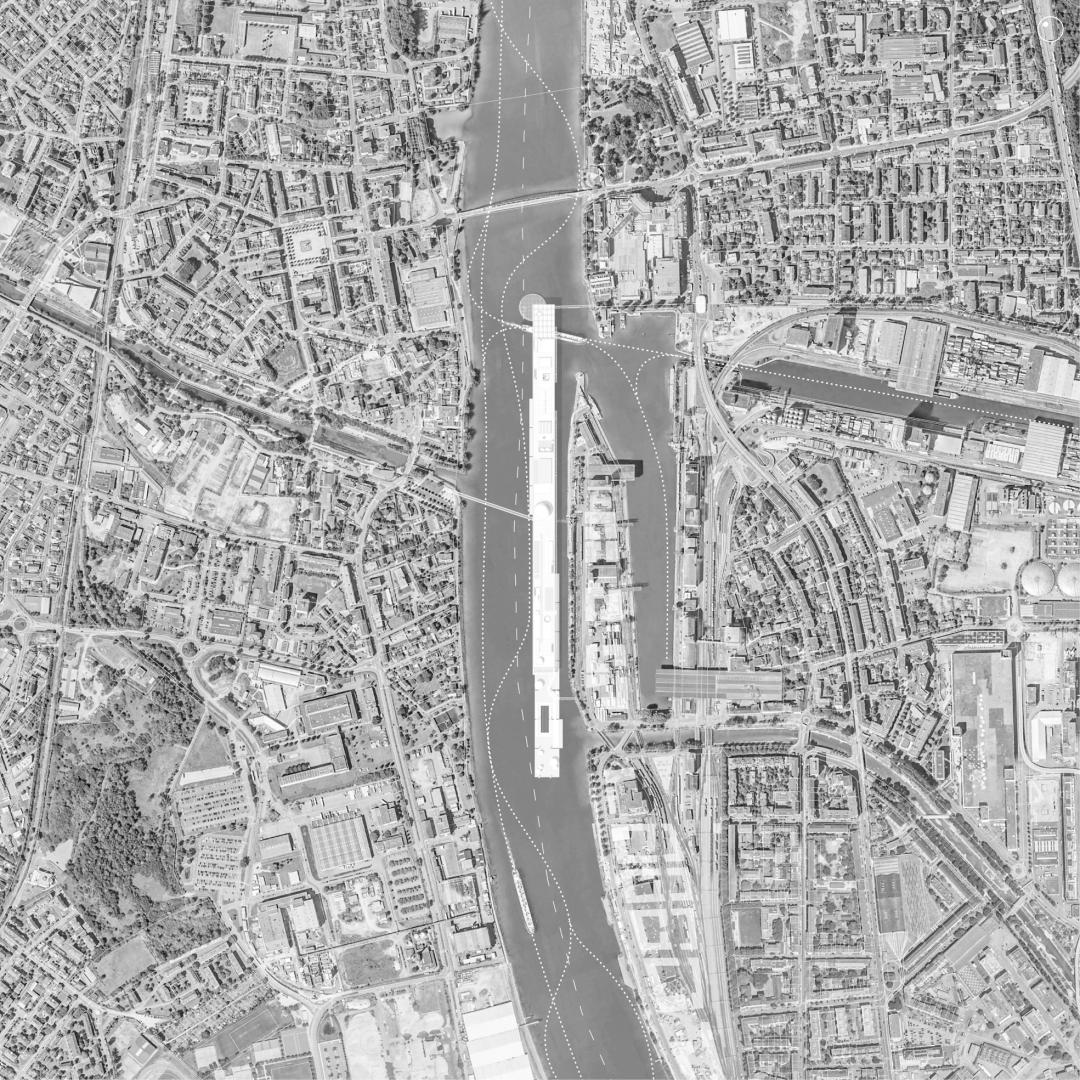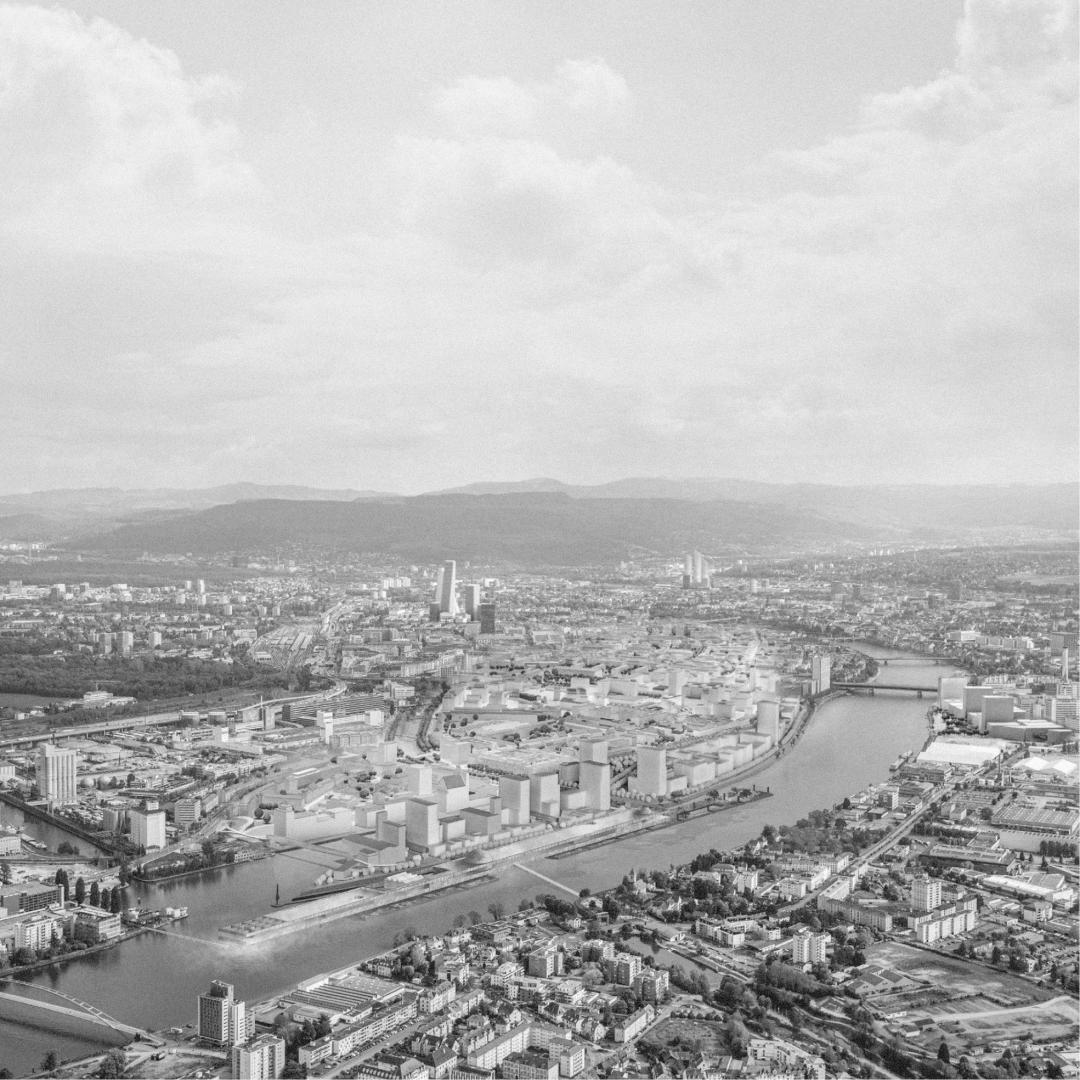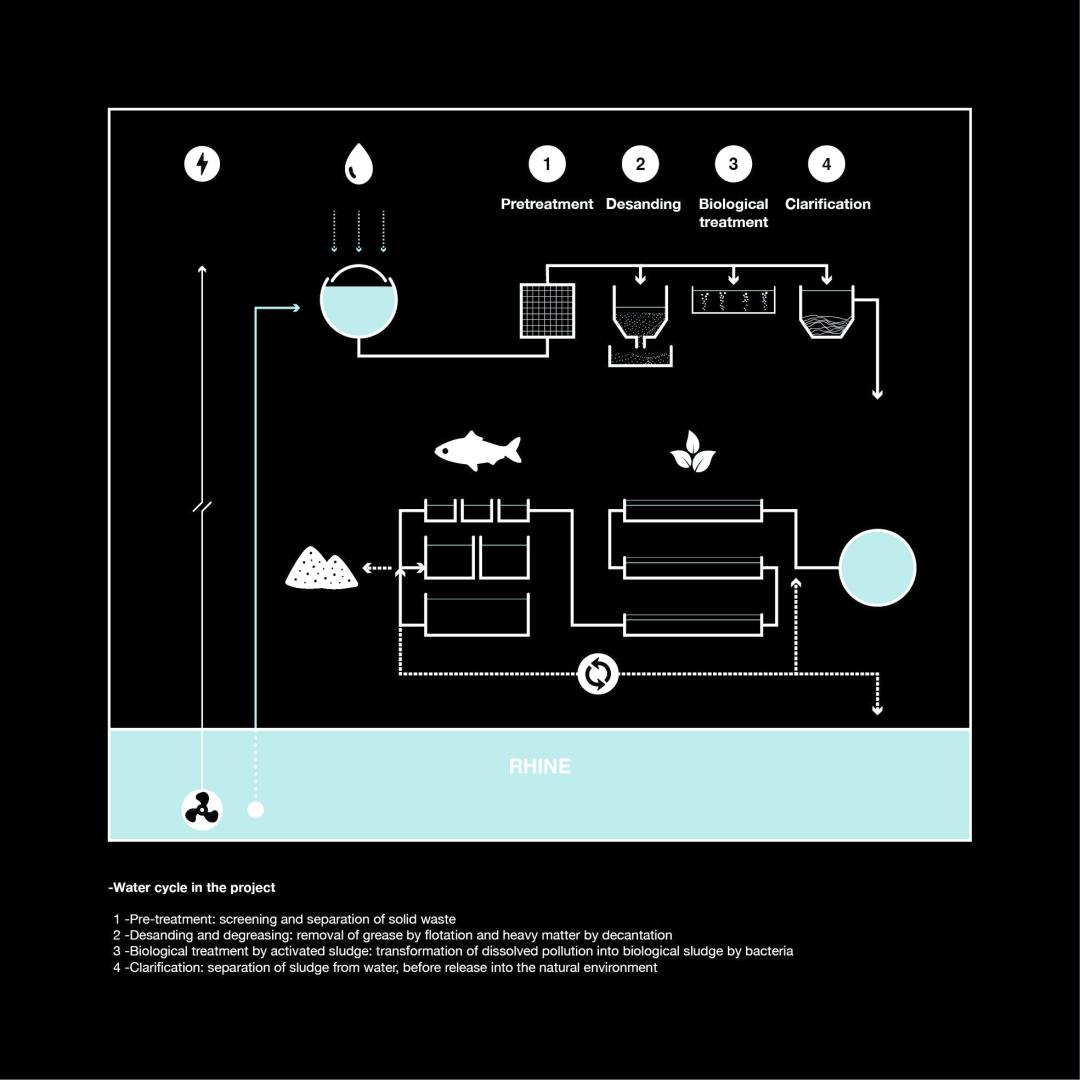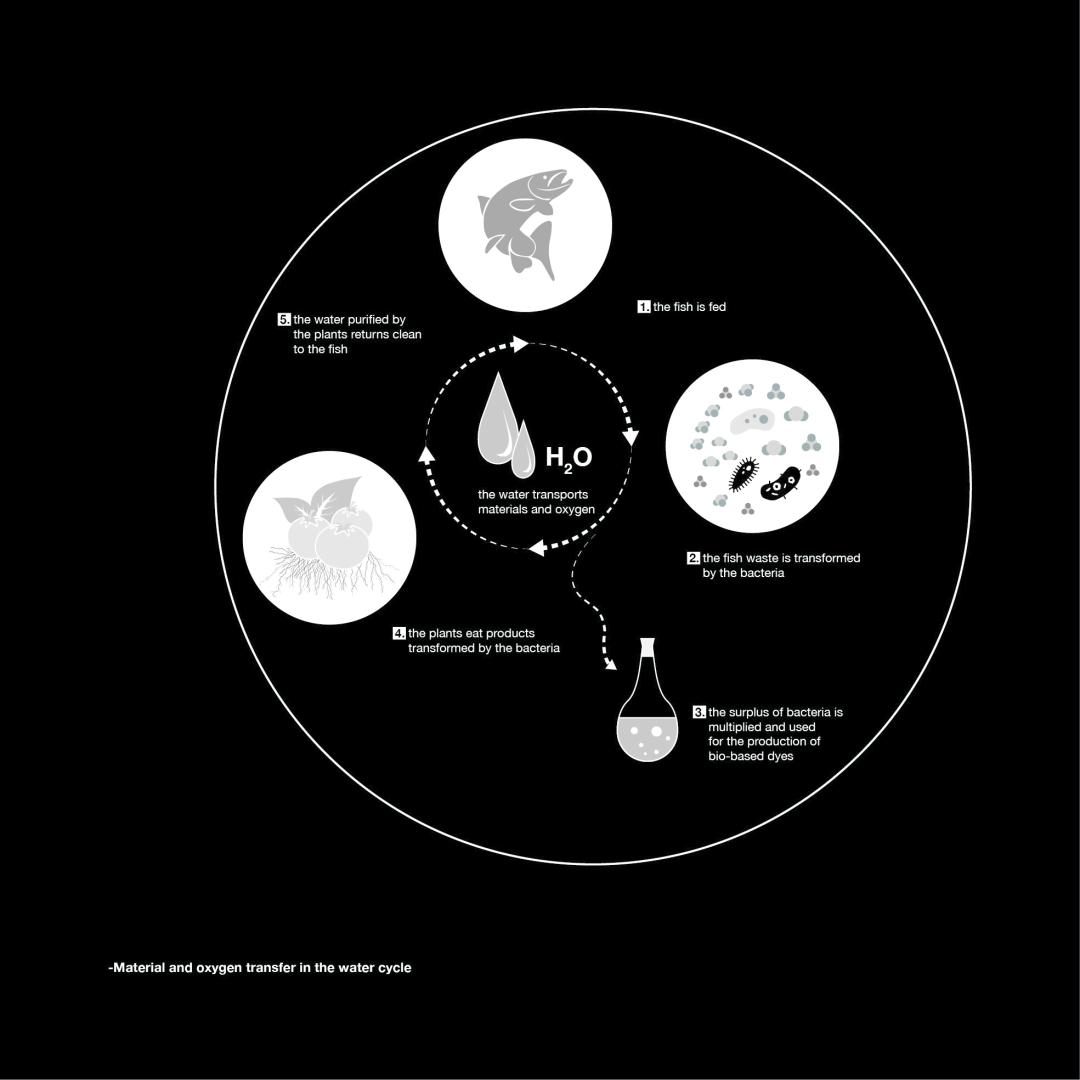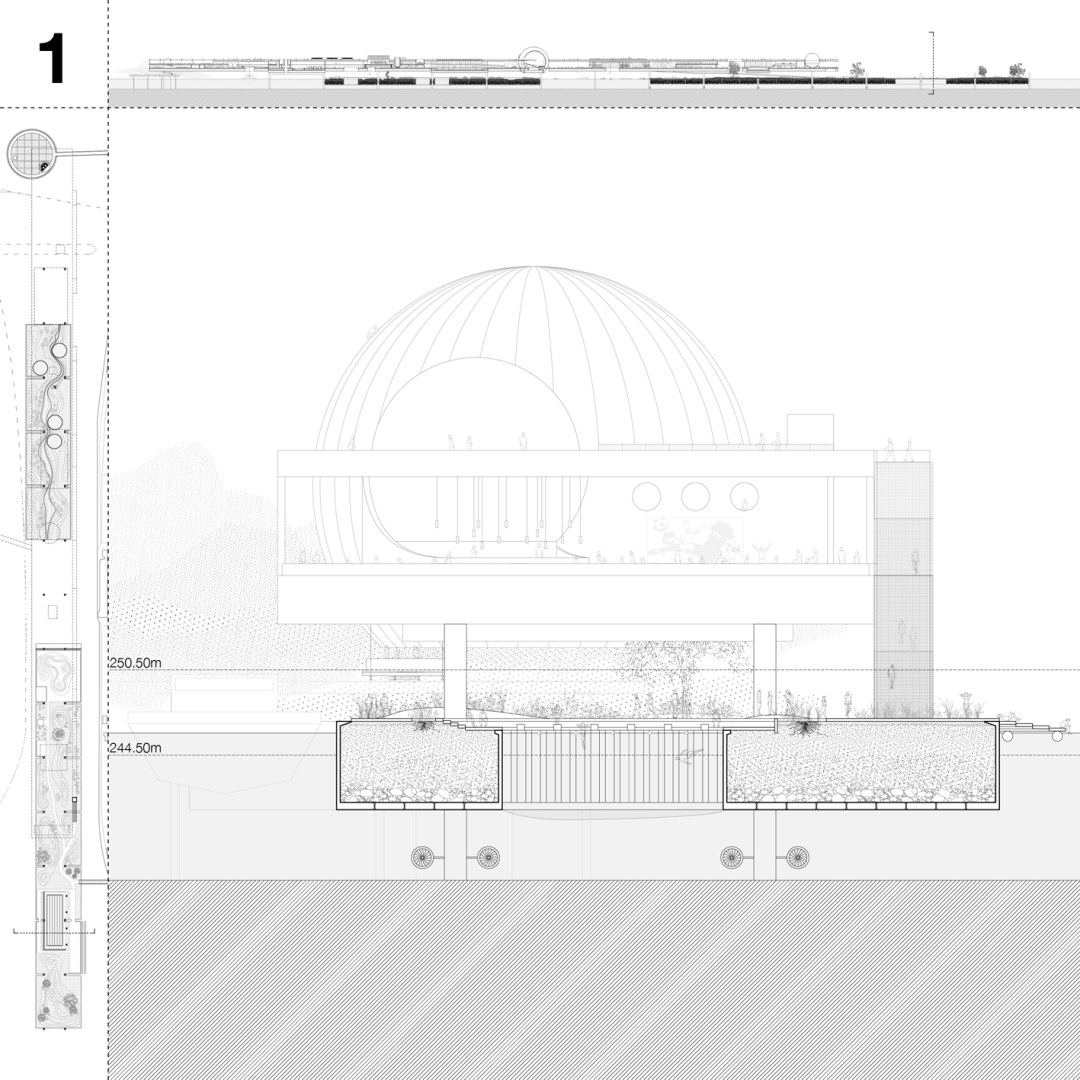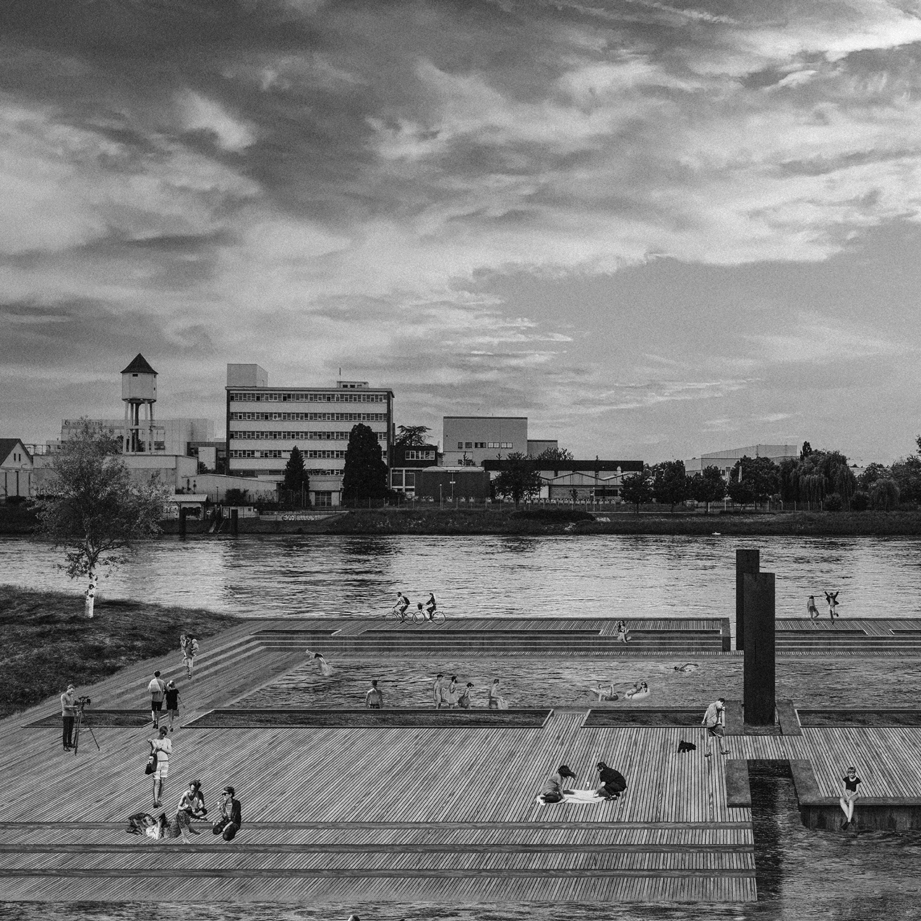(t)rhypark
Basic information
Project Title
Full project title
Category
Project Description
Entitled (t)rhypark, this project proposes reflections on the Rhine territory and its ecological balance. The river which flows through this territory unites France, Switzerland, and Germany at one specific point: the tripoint. We believe that the landscape is no longer defined solely by administrative boundaries, but rather by the inherited context.
This is where the (t)rhypark takes place, an architecture at the service of its territory, establishing the foundations of a poetic geography.
Geographical Scope
Project Region
Urban or rural issues
Physical or other transformations
EU Programme or fund
Which funds
Description of the project
Summary
The concept presented is based on our diploma project carried out during our studies at the Strasbourg School of Architecture.
The Rhine, with its highly symbolic character, reveals the importance of water as resource. However, despite the site in question being generously irrigated, the quality and access to the common aquatic resource remains problematic today. If it is considered such a fragile resource, this is certainly due to the dependence of the many sectors it irrigates. Indeed, water as a resource signifies the production of energy, potable water, sustenance for biodiversity, the movement of goods and people, as well as recreation. Though disturbances in its flow, temperature or quality directly affect all these sectors and threaten their very existence. It was the stigma caused by the alteration of the Rhine that determined the river as our subject of study. In 1986, the fire at the Sandoz chemical plant in Basel marks the culmination of this deterioration.
A century prior, the Rhine was considered the largest river containing salmon in Europe. However, over the past fifty years, the salmon inhabiting the Rhine has unfortunately fallen victim to the catastrophic fluvial management. As a species which exhibits certain qualities as well as being accessible, we were led to question the traditions and expertise involved in salmon pisciculture within the Rhine, and thus embarked on a contextually engaged architectural project.
In other words, this approach tackles the immaterial heritage, the intangible border between three nations with their languages and traditions, the built and natural heritage of the context, as well as the foundations of a fecund aquatic culture for Rhine. The considerable dimension of this architecture provides it the opportunity to experiment new programs and forms. It can confront itself to the scale of the landscape surrounding it, and hence ensure territorial cohesion, as well as re-enchanting the natural heritage of the Rhine.
Key objectives for sustainability
The project takes the form of a floating structure, placed upon the Rhine in the direction of its flow, on the border between the three countries. Various programs are deployed, in the form of micro-systems dedicated to the protection of the natural heritage, the production of raw materials and finally leisure activities. These consist mainly of accompanying the various stages of maturation of the salmon in fresh water, prior to its migration to salt water. The objective is to participate in the reintroduction of salmon into the Rhine and to allow the river to gradually recover its salmonic character.
This first part of the program is accompanied by aquaculture production, taking advantage of the rich nutrients released by the fish, while ensuring natural water purification. This reinterpreted culture allows for continuous plant production without chemical inputs and with 90% less water consumption than soil-based cultures. The production of bio-based pigments completes this productive ensemble, echoing past industrial neglect that has greatly polluted the water system on a large scale. Reconstituting this knowledge and adapting it to current issues shows that it is possible to renew oneself from one decade to the next, and to reinvent oneself from one century to the next without disregard for the past.
In terms of production, the aim is to create as many links as possible between the different entities of the program. The objective being the convergence of activities that were not initially associated. Their common denominator is the indispensable use of water for their proper functioning: irrigation, rinsing, heating, treatment, cooling (etc.). The fact that the different stages of aquaculture and green chemistry processes were combined enabled us to create a high-performance system, allowing each part of the program to feed the other and reduce losses.
Key objectives for aesthetics and quality
The infrastructural dimension proposed by our diploma project was primarily a way of stimulating the utopic aspect, all the while crossing issues at the scale of the territory, the city, and the ecosystems. At the same time a good place and a non-place, the utopia seemed to be an effective tool for embodying the foundations of our reflection.
As a result, this experimental platform is intended to be attentive to the evolution of the flow rate, the quality, the temperature, and consequently to the different changes of state of water. Be it condensation, evaporation or solidification, these variations help to awaken the user's senses and question our way of understanding, protecting, and appreciating this common good. This notion of sharing is, in our opinion, essential for a productive culture of the Rhine. This playful experience joins the various programs mentioned above and contributes to the design of this open-air "laboratory".
Composed of a floating level, a built thickness and a roof terrace open to the city, the architecture reveals, materializes, and allows us to inhabit the border, by strategically implanting itself on the Rhine, to reveal, mask or enhance the architectural and urban heritage present on the banks. To those who see in the project a boat, we counter that it is architecture. To those who seek architecture, we will speak of boats. Nevertheless, this new public space, which does not belong to any of the three countries, reflects the scale of the context, facilitates the crossing of the river and tries to reinforce the feeling of belonging for the inhabitants.
Key objectives for inclusion
While the focus so far has been on the protection and enhancement of the natural heritage and the skills which this entails, the final part of the program focuses on leisure activities and offers different forms of access to the water for visitors.
However, recreation is not limited to the pleasures of the water. Catering areas, a floating park and spaces without function, which can be freely appropriated, particularly on the roof, complete the ensemble. These places accumulate a very large number of functions and activities, synonymous with intensity and attractiveness. A place where one can have a coffee, park one's bike, recharge one's battery, pick up a parcel, leave one's luggage, look at the exhibitions of the surrounding museums, chat, draw, listen to music, play, dance or even watch a film. These in-between spaces, which would normally be dedicated to waiting or passing, encourage encounters and exchanges with others, adding value to the Franco-German-Swiss border.
But what is a border really? If a border between countries is usually no more and no less than an administrative limit, it is above all materialized by its thickness. This physical boundary intersects with territorial dynamics and allows local cultures to build on regional potentials. In our case, the border between the three countries is not limited to the thickness of the Rhine but leads us to consider the entirety of the area in which the river is situated.
Thus, this nuance leads us to reconsider our usage of the border. Going beyond traversing a limit, this project invites the user to walk along it, to embrace it, and seeks to make the experience unique: a fundamentally human place where everyone cohabits.
Physical or other transformations
Innovative character
The foundations of the concept are largely based on the notions of sustainability and circularity. The quality and use of the water resource is the starting point of our thinking, and this is the basis for the choice of programs and their relationship: a water machine, capable of filtering the Rhine. This programmatic synergy is made possible by man, but it is above all imagined for him. Indeed, the natural cycle of water, its accessibility, as well as its use, condition the habitability of the territory. Production, protection, and leisure are intertwined. The effervescence that emerges from these interactions is the desired result of a resilient micro-system, integrated into the local ecosystem.
The metaphor of the boat transports us and gives us a glimpse of an experience, born above all out of a fascination for these scientific and technical disciplines linked to architecture. The understanding of the territory fully justifies these choices. This Noah's Ark is open to the greatest number of people and strives to offer a natural, landscaped, and architecturally sound setting with which users can easily identify. This feeling of belonging is even more important in the context of the Upper Rhine, where the river marks the border between Germany, France, and Switzerland. Thus, in addition to the large-scale environmental issues, this project is nothing other than a public space on the Rhine, crystallizing the environmental, social, and cultural dynamics common to these cross-border territories.
The utopian image that accompanies the project invites us today to imagine more concretely how to materialize this concept. Both on the urban and landscape scale, as well as on the architectural scale, we are convinced of the importance of an architecture that is mindful of its context, relying on the use of simple, tested materials, capable of withstanding the test of time.

